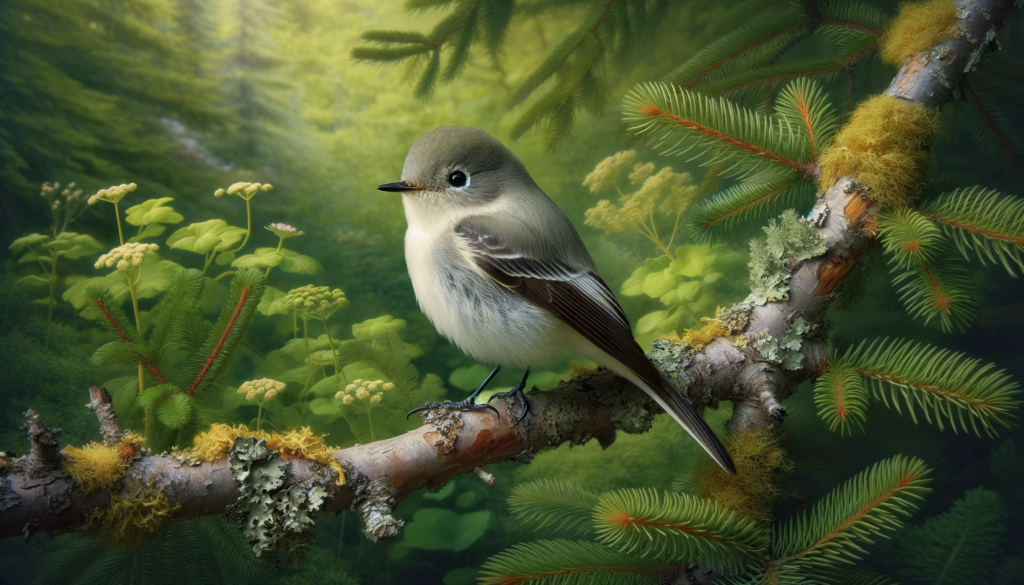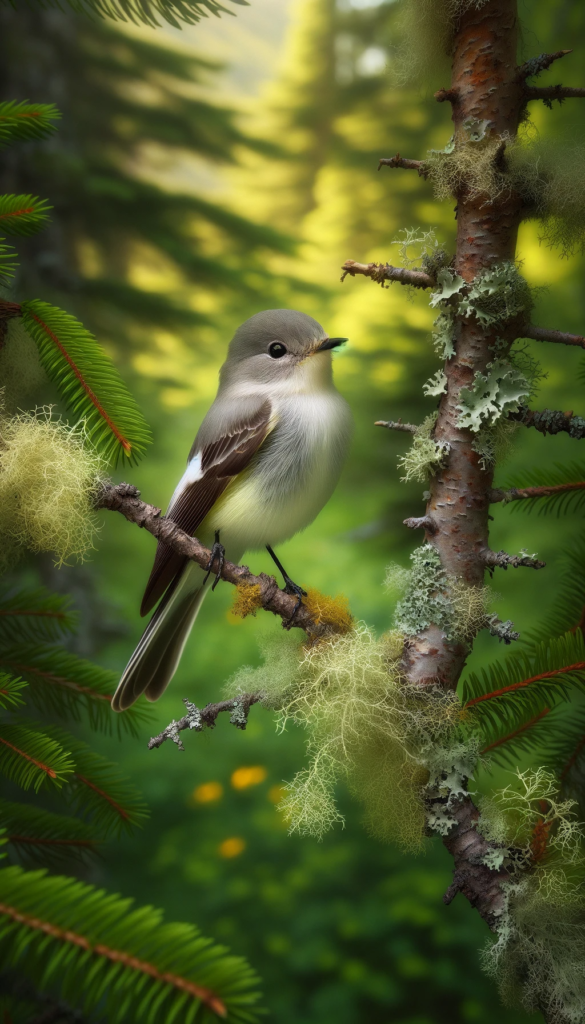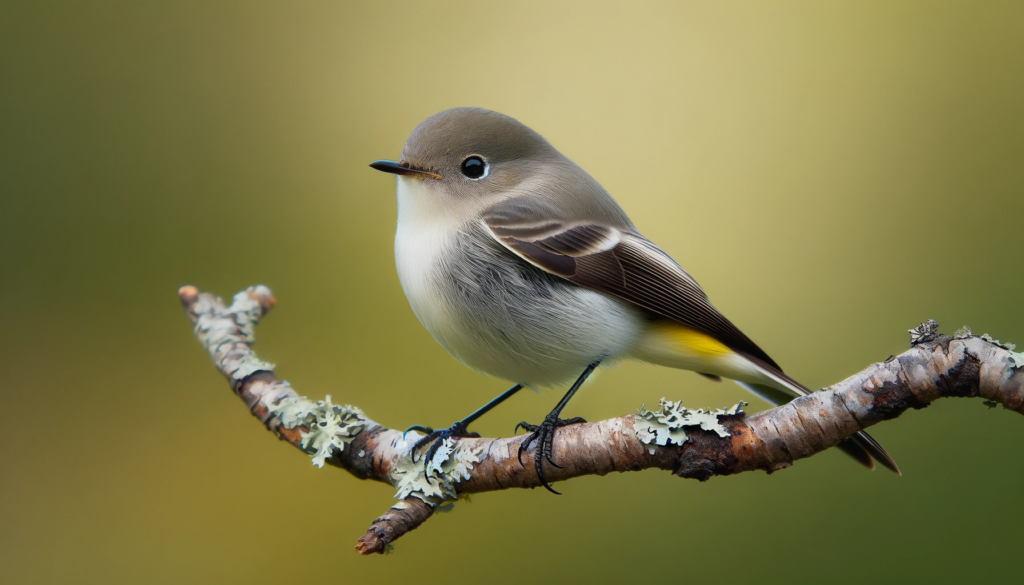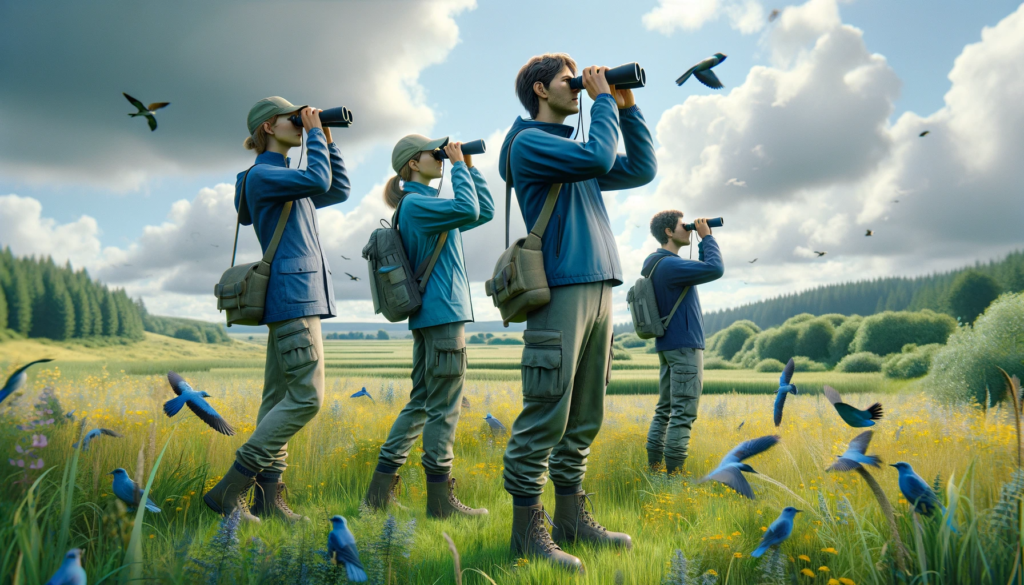In the face of increasing climate change challenges, endangered Willow Flycatchers in San Diego are showing a remarkable display of adaptability. Recent research reveals these small brownish-olive songbirds have undergone a significant genetic shift, equipping them to better survive rising wet and humid conditions in Southern California. This study, which involved a whole-genome analysis of more than 100 years worth of flycatcher specimens, showed present-day birds possessing a higher prevalence of gene variants linked to adaptation to their changing environment. Intriguingly, this evolutionary response, brought about by interbreeding with other Willow Flycatcher communities, underscores the importance of preserving substantial and interconnected populations for survival amidst shifting climate dynamics. So, the enduring Willow Flycatchers of San Diego serve as a testament to the powerful force of adaptation in our rapidly changing world.

Background of the Endangered Willow Flycatcher
Description and Habitat
The Willow Flycatcher is an unassuming bird in brownish-olive songbird known for its resilience, adaptability in facing climate change, and its declining numbers. It is one of four subspecies and carries great significance in the bird world. Recognizable by its distinct song, the Willow Flycatcher primarily inhabits wet willow thickets, creating a unique environmental niche.
Historical Population Trends
Historically, the Willow Flycatcher spread its range over seven states, from Texas to California. However, evidence shows a steady decline in their population due to changing climate, habitat loss and shrinking genetic diversity. Notably, most recent records have noted a significant population in San Diego.
Conservation Status
Considering its population trends and the threats it faces, the Southwestern Willow Flycatcher has been federally protected under the Endangered Species Act since 1995. These protections aim to ensure the survival of the bird and its ecological contribution.
Impact of Climate Change on Habitat
Changes in Precipitation Patterns
San Diego’s willow thickets, which housing a notable population of Willow Flycatchers, have experienced increased variability in precipitation patterns over recent decades. This variability affects the birds, with potential impacts on their food sources, nesting practices, and overall habitability of their environment.
Temperature Variations
Rising temperatures pose a significant challenge to the Willow Flycatcher’s survival. The bird must adapt to these escalating conditions to thrive in its traditional habitat.
Impact on Insect Prey Abundance
The Willow Flycatcher’s diet mostly consists of insects, thus changes in weather can limit food availability. Climate change might affect the abundance of insects, significantly altering the Flycatcher’s food chain.
Adaptive Genetic Changes in Willow Flycatchers
Importance of Genetic Diversity
Genetic diversity underpins the survival and adaptability of species to changing environmental conditions. In the case of the Willow Flycatcher, genetic diversity has allowed the bird to adapt to the escalating wet and humid conditions in its coastal habitat.
Evidence of Genetic Adaptation
Research has shown evidence of genetic adaptation within the Willow Flycatcher population in San Diego. Genomic analysis revealed an increased prevalence of gene variants associated with adaptation to wet and humid conditions in present-day Flycatchers compared to specimens from over 100 years ago.
Implications for Conservation
This genetic adaptation suggests that conservation measures should consider preserving genetic diversity alongside protecting habitat, as it significantly contributes to the Flycatcher’s survival and adaptability.
Interbreeding and Genetic Exchange
Mechanism of Genetic Exchange
Interbreeding plays a crucial role in the Flycatcher’s genetic adaptation. It introduces new genetic material into populations, equipping them better for environmental changes.
Role of Migration and Interbreeding
Migration of Willow Flycatchers from around the Southwest and the Pacific Northwest has facilitated genetic exchange with San Diego’s population. This exchange has influenced the Flycatcher’s evolutionary response to climate change.
Benefits of Genetic Diversity
Greater genetic diversity allows a population to adapt to changing conditions. A population with diverse genes can produce individuals with characteristics suited to new environmental situations, ensuring a richer and more resilient gene pool.

Research Methodology and Findings
Whole-Genome Analysis
In-depth whole-genome analysis of the Willow Flycatchers found complicated and unique genetic changes aiding adaptation to new environmental conditions.
Comparative Study with Historical Data
By examining over 600 Flycatcher specimens dating back to the early 1900s, researchers noticed significant changes in the genetic structure of the San Diego population.
Significance of Recent Changes
The recent genetic changes demonstrate the Willow Flycatchers’ extraordinary capacity for adaptation, underscoring the necessity of preserving their genetic diversity for future survival.
The Role of the San Luis Rey River Ecosystem
Habitat Characteristics
The San Luis Rey River’s wet willow thickets offer a unique and rich habitat for the Willow Flycatcher, providing ample nesting sites and thriving insect populations to feed on.
Relation to Willow Flycatcher Survival
This specific location is integral to the Willow Flycatcher’s survival. Its unique conditions have necessitated and facilitated the bird’s genetic adaptations.
Conservation Efforts
Preservation and restoration efforts centered on the San Luis Rey River ecosystem are crucial for the Flycatcher’s survival. This includes both habitat conservation and measures to maintain their genetic diversity.
[





Policy and Conservation Implications
Endangered Species Act
The flycatchers’ listing under the Endangered Species Act calls for stringent conservation measures. This policy ensures legal protections for the bird and its habitat.
Habitat Protection Strategies
To ensure the Flycatcher’s survival, habitat protection must extend beyond the San Luis Rey ecosystem to include other potential and current habitats. Encouraging genetic exchange among different populations is also crucial.
Future Policy Considerations
Policy developments must consider the Willow Flycatcher’s need for genetic diversity alongside habitat protection. Future strategies should support research and facilitate genetic exchange among populations.
Management of Wet Willow Thickets
Preservation Techniques
Traditional preservation techniques involve protecting existing willow thickets, controlling human intrusion, and maintaining the quality of the habitat.
Restoration Projects
Restoration projects focus on recreating lost habitats, fortifying weak ones and managing intrusion. This may involve re-growing willow thickets and managing nearby water sources.
Community Involvement
Local communities can contribute significantly to preservation and restoration efforts. Their involvement may range from physical help to raising awareness and securing funding for such projects.

Challenges and Limitations
Limitations of Genetic Adaptation
Despite successful genetic adaptations to environmental changes, the Willow Flycatcher still faces numerous challenges. Genetic adaptation has its limitations, and not all changes result in favorable outcomes.
Potential Threats to Resilience
Other threats such as habitat loss, pollution, and human interference continue to challenge the Flycatcher’s resilience and pose a risk to their survival.
Conflict with Human Activities
The Flycatcher’s habitat often conflicts with human activities such as urban development. Future conservation efforts must address this conflict.
Role of Scientific Community and Public Awareness
Public Education and Awareness
Public education plays a vital role in conservation efforts. Raising awareness about the Willow Flycatcher’s plight can lead to increased support for preservation activities.
Support for Scientific Research
Ongoing support for research is essential for understanding the Flycatcher’s needs and determining the most effective conservation strategies.
Citizen Science Contributions
Citizen science contributions, from local birdwatching to participation in data collection projects, can provide invaluable assistance in gathering information and implementing conservation strategies.



